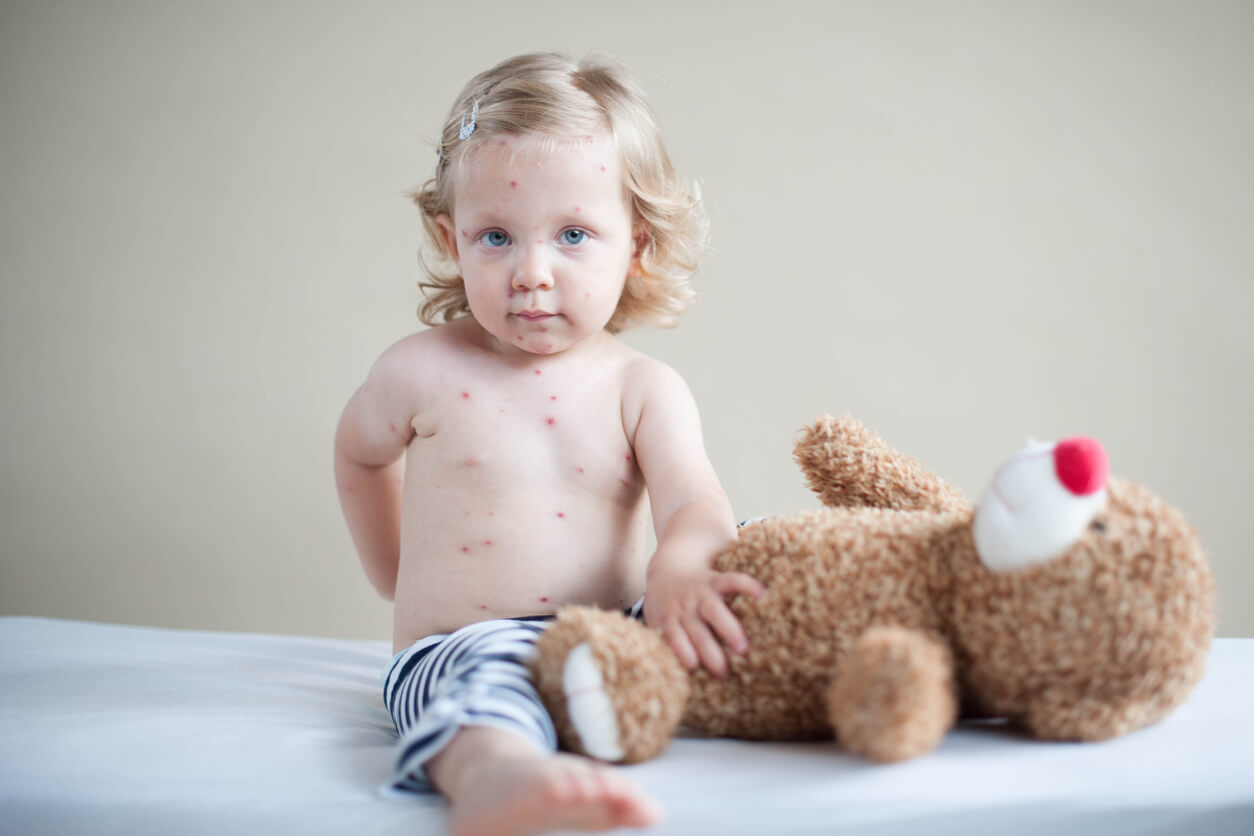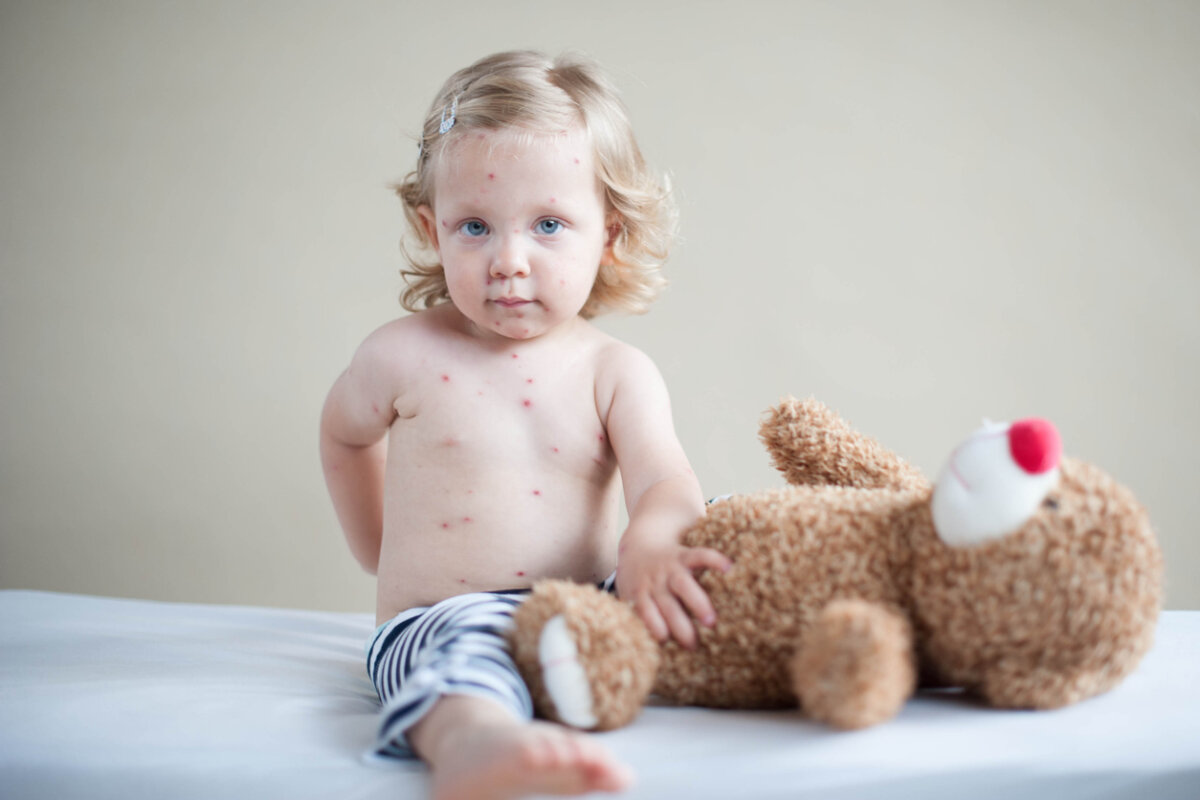Babies have very sensitive and delicate skin, which makes them more prone to certain rashes. Here we tell you everything you need to know about the most common rashes.
Baby rashes are a common concern for many parents and caregivers. These rashes can be disturbing and anxious, but in most cases, they are treatable and temporary.
for this reason, It is important to know how to recognize them and differentiate them so that appropriate action can be taken when they arise. In this article, we give you a guide to 10 important baby rashes you need to know about. Write down this information to be prepared!
What are the most common baby rashes?
A baby’s rash usually appears in the first few days of life and may cause concern for parents. However, it’s worth noting that most of them tend to disappear within a few weeks. Below we have listed some of the most common rashes.
1. Diaper rash
One of the most common rashes in babies is diaper rash, according to a recent publication from the National Library of Medicine.it manifests as redness and rash in the area covered by the diaper Due to dampness, friction and prolonged contact with urine and feces.
While this condition usually clears up on its own within a few days, there are some preventive and therapeutic steps to consider:
- Use a protective cream.
- Keep the area clean and dry.
- Change diapers regularly.
2. Prickly heat
prickly heat, also known as prickly heat, Occurs when sweat ducts become clogged and droplets become trapped under the skin. This is because the skin structure is not yet fully developed.
This rash appears as small red bumps on the skin, usually in areas covered by clothing. Usually, this condition goes away on its own over time. However, Keeping your baby cool, wearing breathable clothing and avoiding overheating can help prevent this.
3. Eczema
Eczema is a chronic skin condition that can also affect babies. It is characterized by dry, red, itchy skin, often accompanied by small blisters.
To help manage eczema flare-ups, the National Eczema Association recommends moisturizing baby’s skin with a doctor-prescribed cream and avoiding irritants or triggers such as diet, stress, temperature, and allergies.
4. Urticaria
Baby hives appear as raised, red, itchy welts. They are usually allergic reactions to foods, medicines, or other substances.
Although it can be treated at home, if an allergy is suspected, the UK’s National Health Service recommends seeing a doctor to find out the cause and receive appropriate treatment.
5. Impetigo
Impetigo is a very common bacterial infection that causes yellow blisters to appear that burst and scab over. The risk of developing these lesions increases on skin that has already been irritated by another condition.such as bites, eczema or scratches, as detailed by the Neumors organization.
One of the hallmarks of impetigo is high infectivity. It spreads easily by direct contact with the skin of an infected person, or even by touching contaminated objects such as towels or clothing. Therefore, it is a disease that needs to be treated with prescription antibiotics.
6. Fifth disease
Fifth disease is one of the rash or eruptive illnesses caused by parvovirus B19. it is also known as erythema infectica.
It is contracted through infected respiratory droplets in the air. Once infected with the virus, the following clinical manifestations will appear:
- A mild rash appears on the body.
- high fever
- Severe red spots appear on the baby’s cheeks.
The rash can be itchy and usually clears up within seven days, according to the American Academy of Pediatrics.
7. Hand, foot and mouth disease
HFMD is a mild but highly contagious viral disease caused by a virus Coxsackie.The most distinctive clinical manifestations of this disease include Ulcerative lesions of the oral mucosaand a rash on the hands and feet.
Although there is no specific treatment for this disease, hygiene measures can be taken to reduce the likelihood of superinfection with other bacteria in the normal microbiome.
8. Chickenpox
Chickenpox is one of the most common rash diseases and is caused by the varicella-zoster virus.its symptoms include The rash is characterized by blisters that develop, itch and eventually burst, forming scabs.
Notably, varicella vaccination plays a vital role in preventing this highly contagious disease and its potential complications. It is especially important for groups that are more prone to severe symptoms, such as immunocompromised people and adults.
9. Baby acne
Baby acne is a skin condition that usually appears in the first 30 days of life, It has to do with the influence of maternal hormones passed to the baby through the placenta.
It usually appears as comedones, which are small white pimples that appear on a reddened skin base. According to the Spanish Pediatric Association, These lesions are temporary, benignand tends to go away on its own when the baby’s hormone levels stabilize.
10. Molluscum contagiosum
Molluscum contagiosum is characterized by small, raised lesions with a depressed center. This viral infection is usually benign and goes away on its own over time. However, in some cases, it may be necessary to seek medical intervention for treatment.
The Importance of Preventing Baby Rashes
Baby rashes can have a variety of causes, from allergies to viral infections.always recommend If a rash develops, consult a health professional for accurate diagnosis and correct treatment.
Additionally, practicing proper hygiene, giving your baby breathable clothing, and following vaccination guidelines can help prevent many of these skin diseases.
you might be interested…


